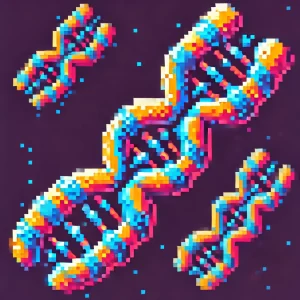
Reversing the Molecular Clock to Fight Aging
Groundbreaking research has recently suggested a tantalizing possibility: regular exercise might not just make us feel younger, but could actually reverse the body’s molecular clock, offering a real physiological defense against aging.
The Science Behind the Molecular Clock
At the heart of this discovery is the concept of the molecular clock.
Unlike the body’s circadian rhythm, which regulates sleep-wake cycles, the molecular clock focuses on the biological aging of cells at the molecular level, particularly in DNA. As cells age, changes in DNA methylation, where methyl groups are added to the DNA, function as biological clocks, effectively indicating the biological age rather than the chronological age.
Research has revealed that structured exercise, such as aerobics and strength training, noticeably affects these markers, slowing or even reversing this clock. Structured regimens are particularly effective compared to casual physical activity in rejuvenating physiological systems that are paramount to health, such as the cardiovascular, immune, and muscular systems (ScienceDaily).
Exercise’s Role in Anti-Aging
Research indicates that exercise can change DNA methylation patterns, effectively promoting a more youthful cellular profile. One study reported by GeroScience emphasized that low-intensity activities, such as brisk walking, can improve chromosomal integrity and enhance cellular repair mechanisms. These improvements are believed to help reduce the risk of age-related diseases, ranging from cardiovascular conditions to neurodegenerative disorders.
It’s not just human studies that have reinforced these benefits. Animal models provide insight into underlying mechanisms, demonstrating how physical activity can lead to broader anti-aging effects. These include improved mitochondrial function, reduced inflammation, and enhanced autophagy, the body’s way of cleaning out damaged cells.
Insights from Related Research
An interesting study, part of the DO-HEALTH trial, investigated the combined effects of vitamin D, omega-3, and an exercise regimen on aging, using DNA methylation clocks to measure biological age in elderly participants. It found that exercise, as part of a comprehensive lifestyle approach, had a synergistic effect on delaying biological aging (Nature). While omega-3 and vitamin D individually showed benefits, their effects were significantly amplified when combined with exercise.
The Broader Implications for Longevity
These findings offer compelling evidence for the role of lifestyle modification in extending health span, the period of life spent without age-related diseases. They highlight structured exercise as a central pillar in the fight against aging, not just for its general health benefits but for its profound impact at the molecular level.
Moreover, this discovery urges a reassessment of how aging is managed. The potential to modulate the molecular clock through lifestyle choices opens up exciting possibilities in longevity research. It affirms the importance of maintaining physical activity throughout life, even at a leisurely pace.
Conclusion: A Future with More Youthful Years
The idea that exercise can actually reverse the effects of aging is not just a distant hope; it’s becoming a reality backed by solid scientific evidence. As researchers explore this area further, the possibility of living a longer, healthier life seems increasingly achievable. The main takeaway is simple: movement is important, and it could be the key to enjoying more youthful and vibrant years.



